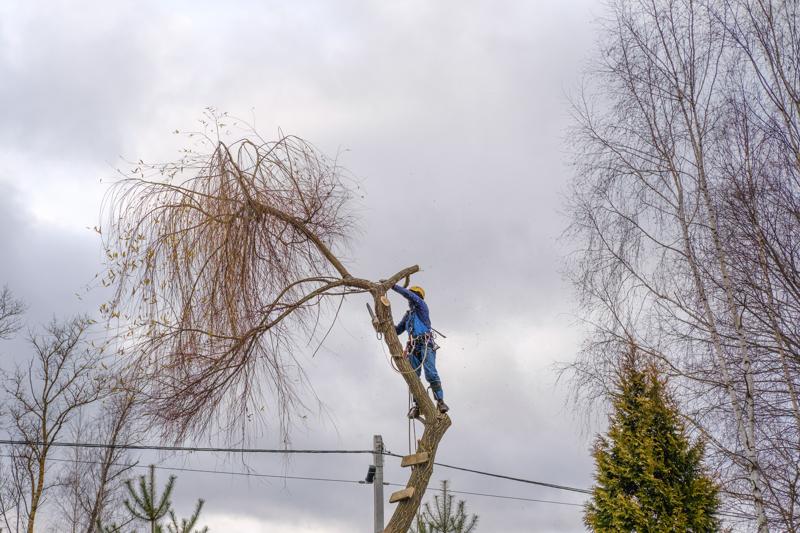Save Your Home and Your Safety: Understanding Tree Removal

Tree removal is a complex and potentially hazardous task. If a tree is dead or diseased or is at risk of falling, it may require removal to prevent damage to the property and to make sure that the tree is safe. But how can you tell whether a tree should be removed? We’ll walk you through the warning signs to look out at and guide you determine whether it’s time to call in the professionals.
Dead or dying trees
One of the obvious signs that a tree must be taken down is when it is dying or dead. Dead trees are without leaves and could have a lifeless appearance. If a tree has no leaves or any signs of growth, it’s probably dead. Additionally, the bark of dead trees might be dry, cracked or peeling.
Diseased Trees
Diseased trees can pose a threat to other plants and trees in the area. The most common signs of disease on trees are dying leaves, wilted or yellowed branches, and mushroom growth at the root or the trunk. If you suspect that your tree is suffering from disease, it’s important to get it checked by a professional arborist.
Leaning Trees
TreesLeaning trees towards one side could be a sign it is a sign that the roots are failing, and the tree could be in danger of falling. To identify if a leaning tree is a danger, look for cracks or broken areas in the trunk and examine the soil around the base of the tree. If you spot any of these signs it is recommended to have the tree evaluated by an arborist.
Overhanging Branches
Trees with overhanging branches that are in close proximity to power lines or buildings could pose a threat to property and safety. If you are concerned about branches hanging overhanging, it’s best to be evaluated by an arborist who will determine whether removal or pruning is needed.
FAQs
What can I do to tell whether a tree is dead?
The tree will be considered dead when it is without leaves and shows no evidence of growth. Additionally, the bark of dead trees could be cracked, dry, or peeling.
What are the signs of a dying tree?
Common signs of disease on trees include the appearance of yellowing leaves, wilted branches, and the growth of mushrooms at the base of the tree.
Is it safe to remove an entire tree on your own?
Tree removal is a difficult and dangerous task. It’s best to leave it to experts who can protect yourself and others.
Conclusion
When it comes to tree removal, you need to be able to identify the indications that a tree requires to be removed. When you’re aware of indicators of dying or dead trees, sick trees, tree leaning, and hanging branches You can take action to protect your property as well as those around you. If you believe that the tree that is on your property requires removal, don’t hesitate to call Hawkesbury Tree Pruning for a professional review. Our highly trained arborists have the experience and equipment to handle all the tree removal requirements. Don’t risk your safety. If you think the tree that is on your property needs to be removed, call Hawkesbury Tree Pruning today for a expert assessment. Our experienced arborists can provide you with peace of mind which comes from knowing that your property is in safe in the hands of our experts. Call us today by dialing 0480 024 203 to schedule an appointment.





















